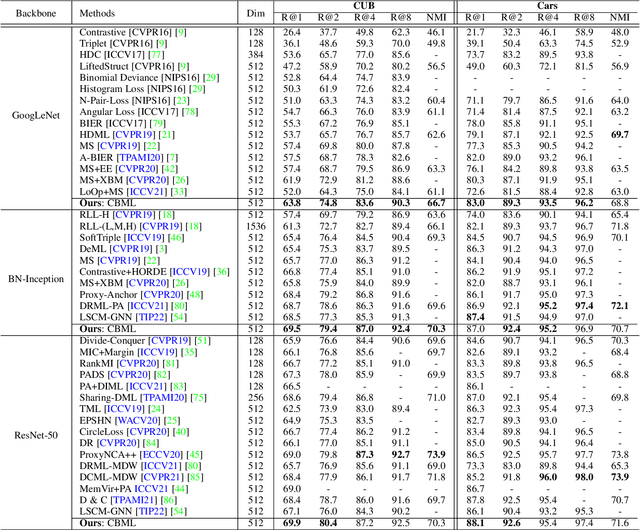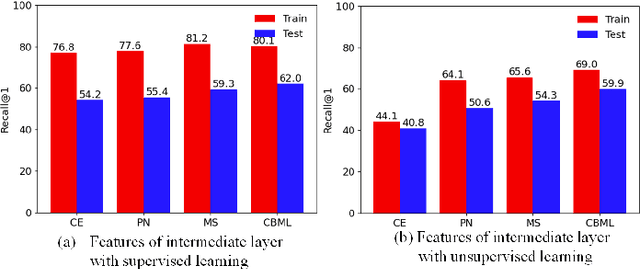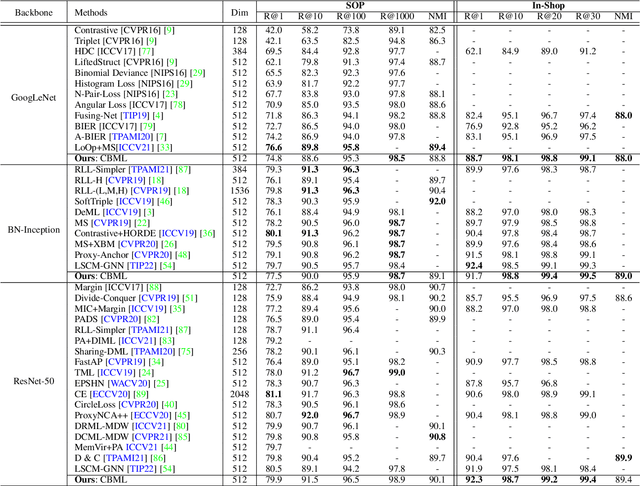Zhiquan He
Harnessing Joint Rain-/Detail-aware Representations to Eliminate Intricate Rains
Apr 18, 2024Abstract:Recent advances in image deraining have focused on training powerful models on mixed multiple datasets comprising diverse rain types and backgrounds. However, this approach tends to overlook the inherent differences among rainy images, leading to suboptimal results. To overcome this limitation, we focus on addressing various rainy images by delving into meaningful representations that encapsulate both the rain and background components. Leveraging these representations as instructive guidance, we put forth a Context-based Instance-level Modulation (CoI-M) mechanism adept at efficiently modulating CNN- or Transformer-based models. Furthermore, we devise a rain-/detail-aware contrastive learning strategy to help extract joint rain-/detail-aware representations. By integrating CoI-M with the rain-/detail-aware Contrastive learning, we develop CoIC, an innovative and potent algorithm tailored for training models on mixed datasets. Moreover, CoIC offers insight into modeling relationships of datasets, quantitatively assessing the impact of rain and details on restoration, and unveiling distinct behaviors of models given diverse inputs. Extensive experiments validate the efficacy of CoIC in boosting the deraining ability of CNN and Transformer models. CoIC also enhances the deraining prowess remarkably when real-world dataset is included.
* 21 pages, 14 figures
MCPI: Integrating Multimodal Data for Enhanced Prediction of Compound Protein Interactions
Jun 15, 2023Abstract:The identification of compound-protein interactions (CPI) plays a critical role in drug screening, drug repurposing, and combination therapy studies. The effectiveness of CPI prediction relies heavily on the features extracted from both compounds and target proteins. While various prediction methods employ different feature combinations, both molecular-based and network-based models encounter the common obstacle of incomplete feature representations. Thus, a promising solution to this issue is to fully integrate all relevant CPI features. This study proposed a novel model named MCPI, which is designed to improve the prediction performance of CPI by integrating multiple sources of information, including the PPI network, CCI network, and structural features of CPI. The results of the study indicate that the MCPI model outperformed other existing methods for predicting CPI on public datasets. Furthermore, the study has practical implications for drug development, as the model was applied to search for potential inhibitors among FDA-approved drugs in response to the SARS-CoV-2 pandemic. The prediction results were then validated through the literature, suggesting that the MCPI model could be a useful tool for identifying potential drug candidates. Overall, this study has the potential to advance our understanding of CPI and guide drug development efforts.
Contrastive Bayesian Analysis for Deep Metric Learning
Oct 10, 2022



Abstract:Recent methods for deep metric learning have been focusing on designing different contrastive loss functions between positive and negative pairs of samples so that the learned feature embedding is able to pull positive samples of the same class closer and push negative samples from different classes away from each other. In this work, we recognize that there is a significant semantic gap between features at the intermediate feature layer and class labels at the final output layer. To bridge this gap, we develop a contrastive Bayesian analysis to characterize and model the posterior probabilities of image labels conditioned by their features similarity in a contrastive learning setting. This contrastive Bayesian analysis leads to a new loss function for deep metric learning. To improve the generalization capability of the proposed method onto new classes, we further extend the contrastive Bayesian loss with a metric variance constraint. Our experimental results and ablation studies demonstrate that the proposed contrastive Bayesian metric learning method significantly improves the performance of deep metric learning in both supervised and pseudo-supervised scenarios, outperforming existing methods by a large margin.
 Add to Chrome
Add to Chrome Add to Firefox
Add to Firefox Add to Edge
Add to Edge